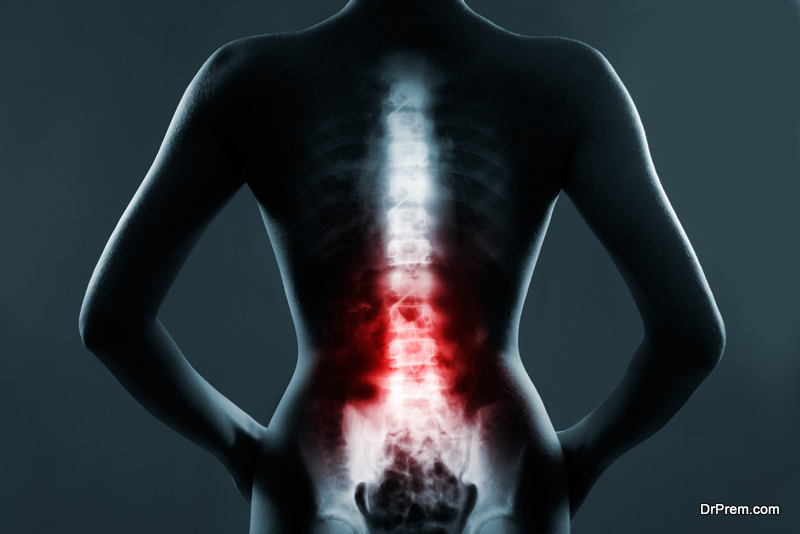Doing physical exercise during the active inflammatory state of ankylosing spondylitis aggravates pain and discomfort in your body. Moderate to high intensity exercises affect the vertebras and lay more demand on the muscles around the spine. The bones of ankylosed or completely fused spine become brittle, which worsens the situation and poses a great risk of fracture even due to a mild injury. The high impact exercises like jogging, running, step-aerobics, heavy weight lifting, and kickboxing should be avoided during this condition. It is always advisable to perform exercises under expert guidance and supervision. Here is a description of nine exercises, which should be avoided if you are suffering from ankylosing spondylitis.
Exercises you should avoid with ankylosing spondylitis
1. Step aerobics
 It is a form of aerobic exercise that uses an elevated platform. The exercise incorporates multiple actions of stepping up and stepping down in a rhythmic way. During stepping movements, the upper part of the body is also used, thereby increasing the shock and jarring of the affected vertebras. Moreover, stepping requires stability and balance of the entire body, which increases the demands of the back muscles and makes the affected joints vulnerable to the aggravating pain. However, step aerobics without jumping decreases the impact of the exercise and the stress laid on the spine. Such low impact aerobics are used by health care practitioners at the time of rehabilitation from ankylosing spondylitis.
It is a form of aerobic exercise that uses an elevated platform. The exercise incorporates multiple actions of stepping up and stepping down in a rhythmic way. During stepping movements, the upper part of the body is also used, thereby increasing the shock and jarring of the affected vertebras. Moreover, stepping requires stability and balance of the entire body, which increases the demands of the back muscles and makes the affected joints vulnerable to the aggravating pain. However, step aerobics without jumping decreases the impact of the exercise and the stress laid on the spine. Such low impact aerobics are used by health care practitioners at the time of rehabilitation from ankylosing spondylitis.
2. Running
Running and jogging are high impact exercises that demand increasing pace for a longer period of time. While jogging or running, the vertebrae face lots of shocks and jarring, because of which the pain and discomfort in the spine may get aggravated. Thus, such high impact exercises are not generally recommended in ankylosing spondylitis. Jogging may also increase the stiffness of the vertebrae affected by the disease, and so the flexibility of the spine gets hampered more. Instead of running or jogging, one can opt for walking on an even surface. The pace of walking should be maintained evenly. But, before starting the exercise regime that includes brisk walking, make sure to consult your doctor about your condition. Beware about the signs that your body may give you while walking, as it knows the best and has potential to give signs that you are hurting it.
3. Heavy weight lifting
 Weight lifting exercises are designed to increase the strength, endurance and growth of muscles in the body. This exercise creates challenge for the body. Performing weight lifting exercise requires taking care of many postures and ways for lifting the weight. Any mistake in maintaining proper posture may cause injury to muscles. Using appropriate body mechanics while exercising is important, as stiffening of the spine creates a challenge to maintain a normal body mechanics. Insufficient core strength and muscle weakness can cause severe pain. The movements of back against resistance can lead to injury in the muscles and ligaments and may also lead to stress fractures. Thus, instead of using heavy weight lifting, one can go for simple exercises that require your own body weight or light weight. You can do more repetitions and more set of such exercises to enhance the strength of the muscles, and avoid further debilitating conditions of back.
Weight lifting exercises are designed to increase the strength, endurance and growth of muscles in the body. This exercise creates challenge for the body. Performing weight lifting exercise requires taking care of many postures and ways for lifting the weight. Any mistake in maintaining proper posture may cause injury to muscles. Using appropriate body mechanics while exercising is important, as stiffening of the spine creates a challenge to maintain a normal body mechanics. Insufficient core strength and muscle weakness can cause severe pain. The movements of back against resistance can lead to injury in the muscles and ligaments and may also lead to stress fractures. Thus, instead of using heavy weight lifting, one can go for simple exercises that require your own body weight or light weight. You can do more repetitions and more set of such exercises to enhance the strength of the muscles, and avoid further debilitating conditions of back.
4. Kick boxing
Kick boxing is a form of high impact exercise that includes kicking and punching movements. This exercise involves upper and lower body movements. The movements of upper body may increase the strain on some of the muscles of the back and may increase stress on the vertebrae depending on the level of ankylosing spondylitis. Kick boxing also increases the demands of balance and stability, predisposing the body towards frequent falls. This type of exercise should be avoided as even a low impact fall can be debilitating for the patient of ankylosing spondylitis. Inflexibility at the level of the condition causes the bones to become weak and the person may suffer from bone fracture. Such an exercise should be completely avoided.
5. Burpees
 This is a form of exercise that includes jumps, squats and push-ups. Burpees include the action of jumping and forceful throwing back of legs to attain the push-up position from the squatting position. Jumping puts great force on the vertebrae and the inter-vertebral discs. Due to the stiffening of the spine, the vertebrae are already predisposed to the increased impact and shocks. Moreover, squatting increases the force on hip and knee joints along with increasing the balancing and stability demands. But, due to stiffening of the spine, these demands are enhanced, and thus cause increased vulnerability of hip and knee joint injuries, or injuries of the muscles around these joints, with increased pain and discomfort at the ankylosed vertebral areas.
This is a form of exercise that includes jumps, squats and push-ups. Burpees include the action of jumping and forceful throwing back of legs to attain the push-up position from the squatting position. Jumping puts great force on the vertebrae and the inter-vertebral discs. Due to the stiffening of the spine, the vertebrae are already predisposed to the increased impact and shocks. Moreover, squatting increases the force on hip and knee joints along with increasing the balancing and stability demands. But, due to stiffening of the spine, these demands are enhanced, and thus cause increased vulnerability of hip and knee joint injuries, or injuries of the muscles around these joints, with increased pain and discomfort at the ankylosed vertebral areas.
6. Cross training
A cross trainer is a low impact option for stair climbing, running and walking. But, some people use cross trainer on very high resistance. They also try to go for exercising on a cross trainer for longer period of time. This increases the stress on back and thus one may strike an episode of increased back pain after the use of the same. So, it should be used wisely with a recommendation by your doctor. There are some precautions that should be taken care of; like avoiding the use of high resistance on the cross trainer and avoiding forward bending. One should also avoid using cross trainer for a longer period of time. It is better to consult an expert fitness instructor before going for this.
7. Jumping
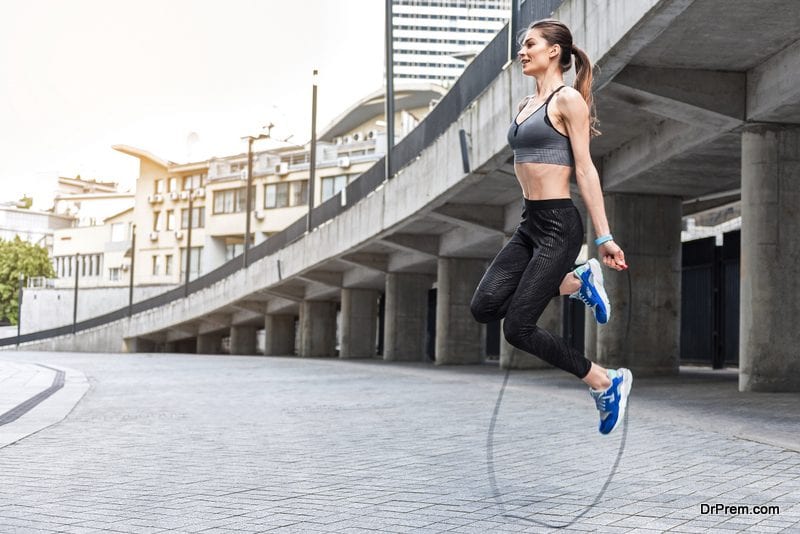 Jumping of any kind, like jumping rope or jumping jacks, should be avoided. Jumping puts great force on the vertebrae and the inter-vertebral discs. Due to the stiffening of the spine, the vertebrae are already predisposed to the increased impact and shocks. So, jumping will cause increase in pain and discomfort. Under normal circumstances, hip joints and knee joints absorb most of the shocks produced during jumping, but when the mobility of the spine decreases, the responsibility of hip and knees increases more towards balancing the body. Hence, such an exercise will make hip joint and knee joint more vulnerable for injury.
Jumping of any kind, like jumping rope or jumping jacks, should be avoided. Jumping puts great force on the vertebrae and the inter-vertebral discs. Due to the stiffening of the spine, the vertebrae are already predisposed to the increased impact and shocks. So, jumping will cause increase in pain and discomfort. Under normal circumstances, hip joints and knee joints absorb most of the shocks produced during jumping, but when the mobility of the spine decreases, the responsibility of hip and knees increases more towards balancing the body. Hence, such an exercise will make hip joint and knee joint more vulnerable for injury.
8. Sit ups
It is a harmful exercise for back, especially lower back. Our back has various curves which are beneficial for transferring the pressure on the vertebrae. In ankylosing spondylitis, a condition arises where the normal curve of the spine is lost. Moreover when you perform sit-ups, the natural curve of your lower back gets reduced. Flattening of the lumbar curve increases the pain and stress on the vertebrae. While lifting the body up during the exercise, people tend to pull their neck forward and also increase the curve of their upper back. These accessory movements increase the demands on the muscles of back, and thus may help in aggravating pain. Partial sit-ups are better options that can be used instead of those deadly sit-ups. In partial sit-ups, you lift only your shoulders up, contracting your abdomen muscles. You may need an expert supervision depending on your condition and level of ankylosing spondylitis to perform partial sit-ups so as to avoid any increase in pain and discomfort.
9. Leg lifts
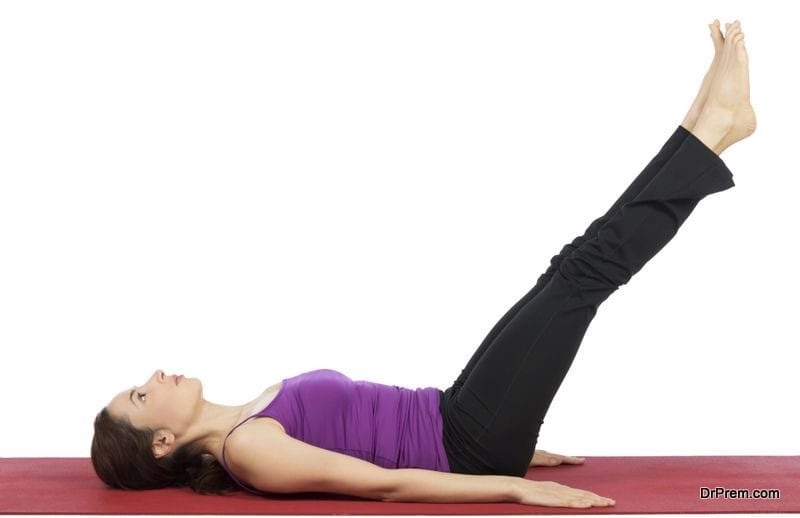 It is an exercise in which you lie straight on the floor and lift both your legs off the floor till your legs come perpendicular to the ground. This exercise also increases the pain in back, as when you lift your leg off the floor, the curve of the lower back increases till the leg attains the position that is perpendicular to the floor. Thus, it puts more demands on the back muscles and also on the spine.
It is an exercise in which you lie straight on the floor and lift both your legs off the floor till your legs come perpendicular to the ground. This exercise also increases the pain in back, as when you lift your leg off the floor, the curve of the lower back increases till the leg attains the position that is perpendicular to the floor. Thus, it puts more demands on the back muscles and also on the spine.
Other tips that you should follow with ankylosing spondylitis
Try exercising while lying down –
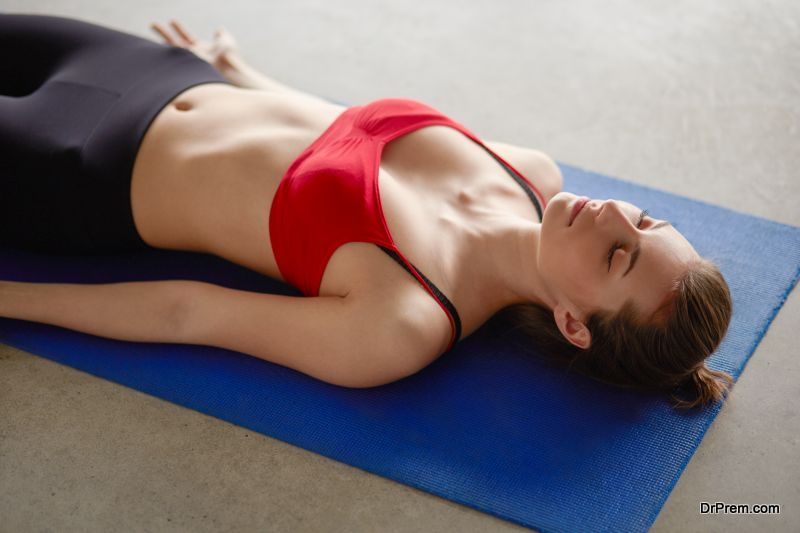 One of the best ways to get better sleep while suffering from ankylosing spondylitis is to exercise while lying down. Lie face down on a firm mattress or on a mat on the floor for about 15-20 minutes. If there is any discomfort while doing this, use a rolled up towel or a fluffy pillow and place it under your head or on your chest. Try this for 20 minutes at the very least with the face facing either side. Once your muscles relax, you can try sleeping on your back.
One of the best ways to get better sleep while suffering from ankylosing spondylitis is to exercise while lying down. Lie face down on a firm mattress or on a mat on the floor for about 15-20 minutes. If there is any discomfort while doing this, use a rolled up towel or a fluffy pillow and place it under your head or on your chest. Try this for 20 minutes at the very least with the face facing either side. Once your muscles relax, you can try sleeping on your back.
Avoid using a large, fluffy pillow –
Though it may not seem like much, elevating the neck while sleeping distorts the spine and can incite severe joint pain. So, only use a pillow if your body allows it. If you can do without it, do away with it completely. In case sleeping without any form of support for the head makes you uncomfortable, try using a folded towel or buy a really thin pillow. In any case, using a pillow to support the back and the legs when you fall asleep should be avoided at all cost.
Purchase the best mattress to tackle ankylosing spondylitis –
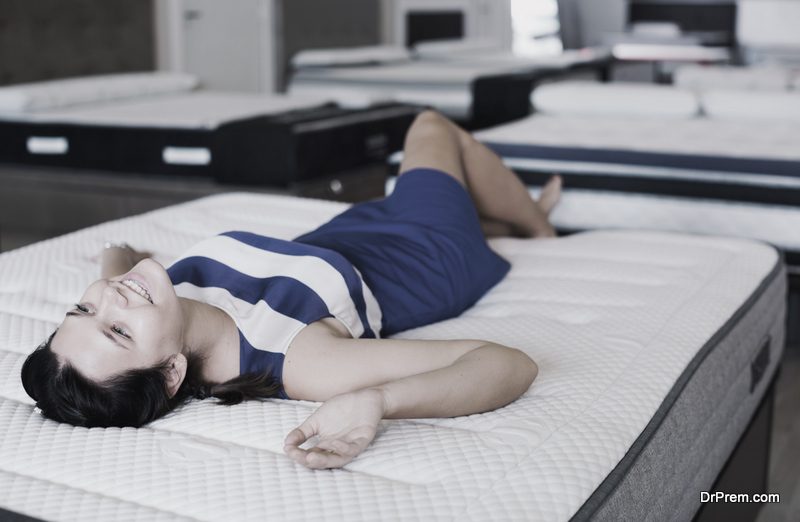 This form of arthritis can be best managed by choosing the best mattress. As arthritis hinders joint movement, having the right mattress that eases joint pain almost over-night is a must have. The correct choice of mattress can help avoid chronic joint pain and can help a person to sleep comfortably through the night which can help avoid other cardiovascular ailments as well. Even though a soft mattress may seem to ease the pain in the joints, it is just temporary relief and it harms in the long run as it does not help put pressure on the joints. A soft mattress also does not help because it encourages the body to settle in one position and sleep, which is not a good idea because it makes you feel stiff in the morning.
This form of arthritis can be best managed by choosing the best mattress. As arthritis hinders joint movement, having the right mattress that eases joint pain almost over-night is a must have. The correct choice of mattress can help avoid chronic joint pain and can help a person to sleep comfortably through the night which can help avoid other cardiovascular ailments as well. Even though a soft mattress may seem to ease the pain in the joints, it is just temporary relief and it harms in the long run as it does not help put pressure on the joints. A soft mattress also does not help because it encourages the body to settle in one position and sleep, which is not a good idea because it makes you feel stiff in the morning.
Leave your bed if you cannot seem to fall asleep –
In your quest to find better sleep, continuing to toss and turn in bed for a long period of time seems like a good thing to do. Rather than doing that, doctors suggest the best thing you can do is to get out of bed to avoid further stress. Reading and listening to smooth classical music is highly recommended in this case to help relax the mind though watching television or using the phone is not. Engaging in any form of rigorous exercise of any kind is highly discouraged.
Include swimming, yoga and meditation in your daily schedule –

Regularly exercising the chest and back muscles by indulging in swimming and yoga can help ease off any inflammation caused. It also helps increase the flexibility of the neck, hips and shoulders which help in sleeping. Meditation is highly recommended because it helps in deep breathing which in turn helps relax the rib cage. Once the rib cage relaxes, the lungs can expand and contract at ease which makes breathing while sleeping very easy and helps the mind relax. One key point to be remembered here is: Always start off with light exercises and then proceed for harder ones. That too only if the body permits. In case of any flare up in pain, please call the doctor.
Improve your posture –
While sleeping, walking and sitting, your focus should always be on your posture. Pay more attention to your body while sitting and walking and try to fall asleep in a better posture without the help of pillows or other peripherals. Your aim should be to keep your spine as straight as possible, with the head held high and your shoulders squared. If your job entails long working at a desk for long durations of time, make sure that you invest in an ergonomically efficient chair. If that is not possible, make sure that you are not slacking while sitting and that your chair is providing ample support to your spine. Keep checking and correcting your posture whenever you can. If you have trouble while sleeping, try sleeping on your stomach for a while before you shift to sleeping on your back.
Final Words
Swimming and yoga besides meditation are key mind and body expanding exercises one should focus on irrespective of the condition one is in. People suffering from this condition should definitely opt to follow this regimen and so should people who are aiming to avoid this condition as well.


